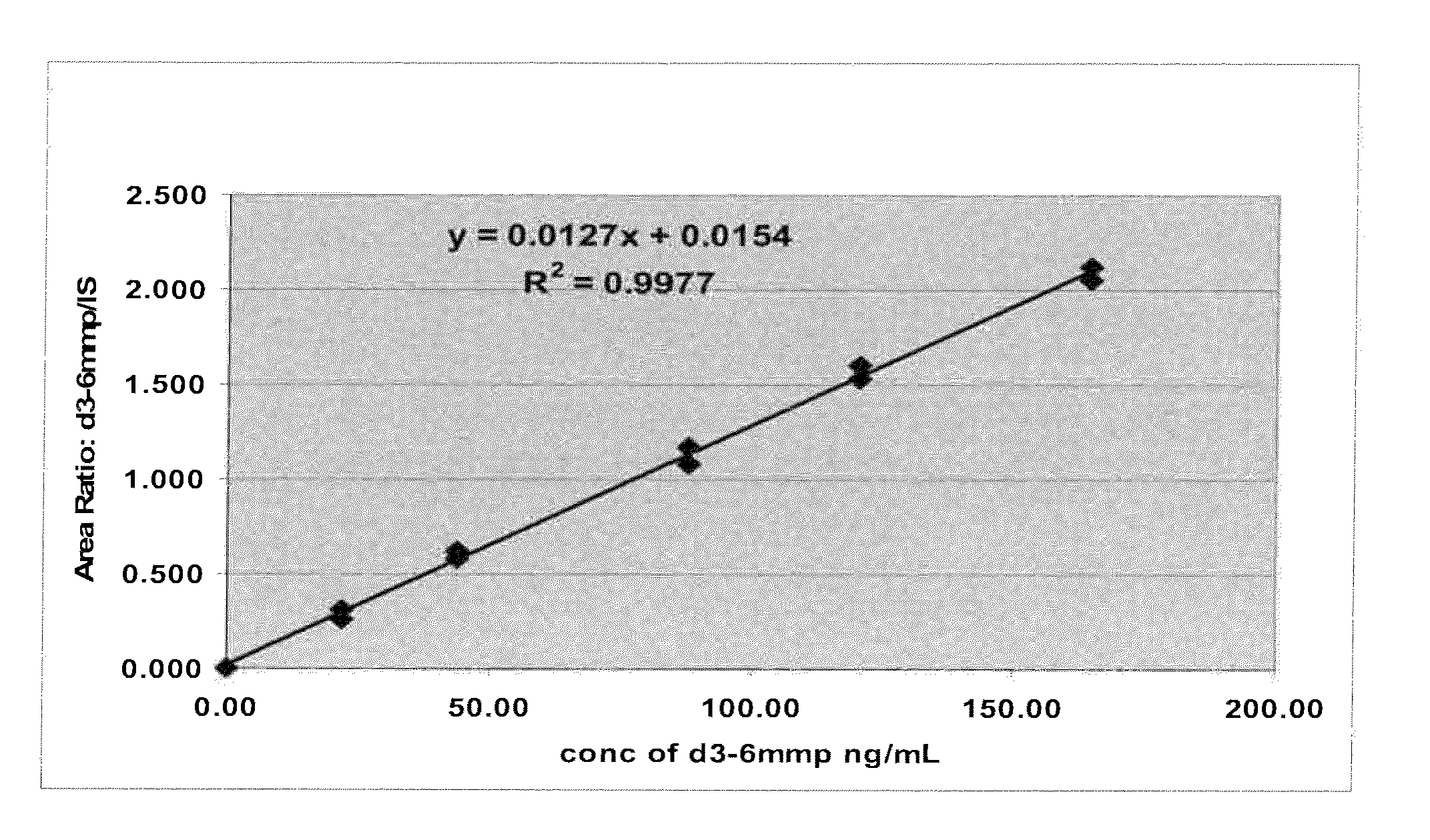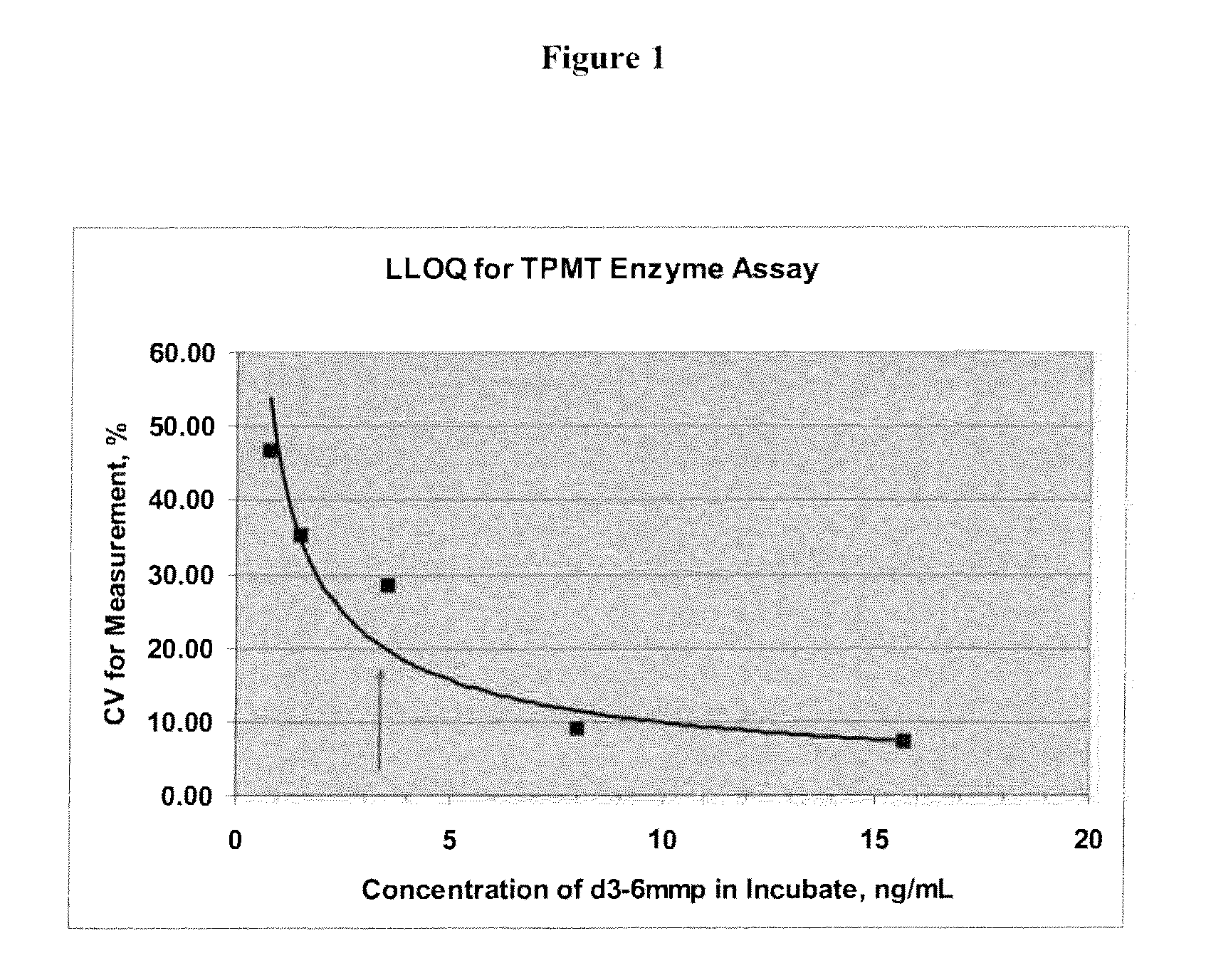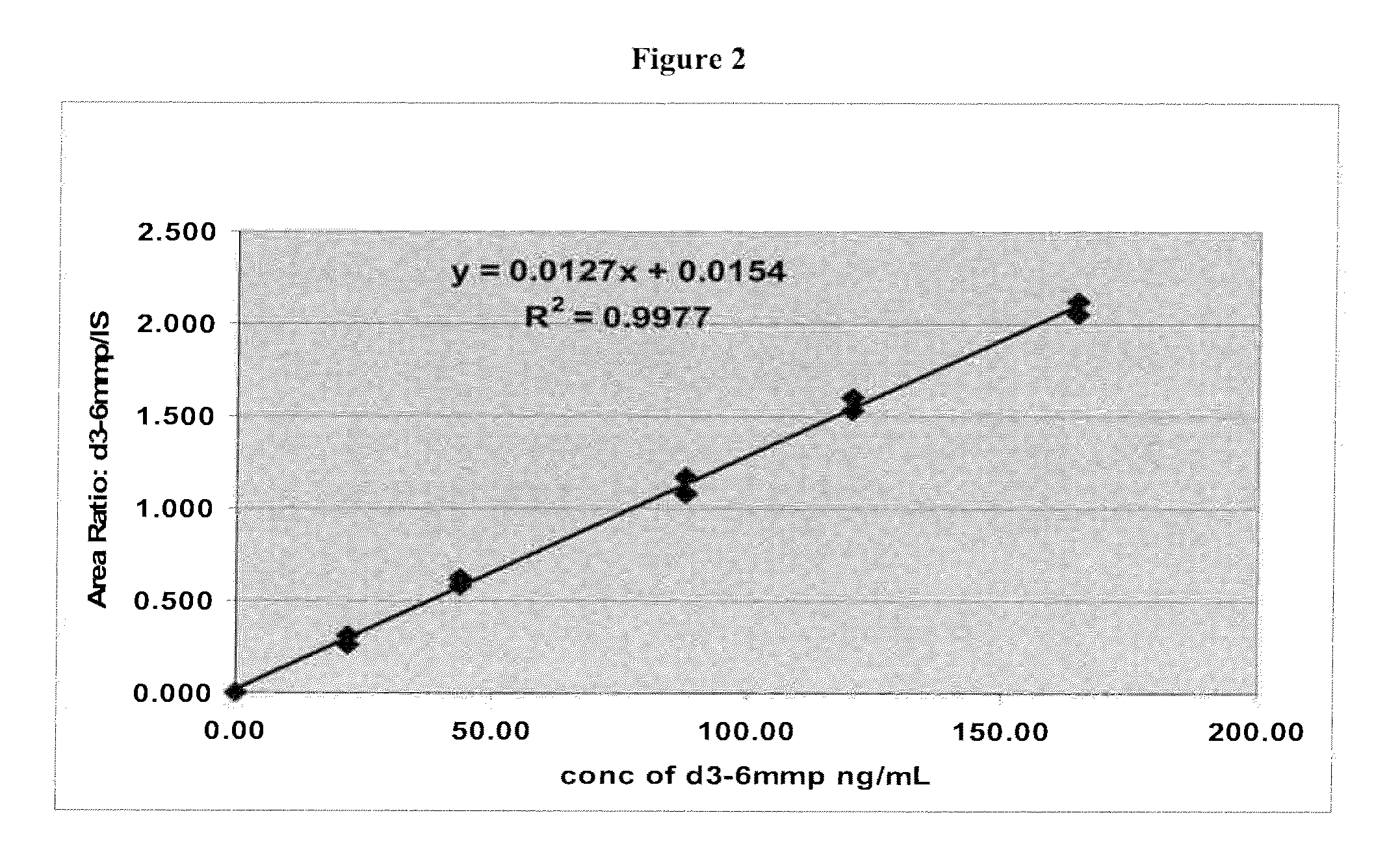Mass spectrometry assay for thiopurine-S-methyl transferase activity and products generated thereby
a thiopurine-s-methyl transferase and mass spectrometry technology, applied in the direction of transferases, separation processes, instruments, etc., can solve the problems of high bioactive levels, high immunosuppression, and inability to detect antibodies, so as to improve the removal of solvent, save significant time and expense, and reduce the risk of dissociation
- Summary
- Abstract
- Description
- Claims
- Application Information
AI Technical Summary
Benefits of technology
Problems solved by technology
Method used
Image
Examples
example 1
Reagent Preparation
[0105]Two calibrant solutions were prepared with d3-6-MMP (Medical Isotopes, Inc., Cat. No. D3280, or equivalent). A d3-6-MMP calibrant stock solution of about 800 ng / L d3-6-MMP in 0.1 N NaOH solution was prepared. A 15.0 μL portion of the d3-6-MMP calibrant stock solution was then diluted with about 5.00 mL 0.1% Formic acid solution to prepare a d3-6-MMP calibrant working solution of about 2.39 ng / μL.
[0106]Two internal standard solutions were prepared with 6-MMP (MP Biomedicals, Cat. No. 102332, or equivalent). A 6-MMP internal standard stock solution of about 1000 ng mL 6-MMP in 0.1 N NaOH was prepared. A 16.0 μL portion of the 6-MMP internal standard stock solution was then diluted with about 8.00 mL of 0.1% Formic acid solution to prepare a 6-MMP internal standard working solution of about 2.00 ng / μL.
[0107]A d3-SAM incubation solution was prepared with d3-SAM (C / DiN Isotopes, Cat. No. D-4093, or equivalent) in 0.1 N phosphate buffer solution at a concentratio...
example 2
Quality Control and Patient Sample Preparation and Incubation
[0109]Patient samples consisting of whole blood specimens of about 3-5 mL were collected in Vacutainer tubes with EDTA. Patient samples were stored at 4° C., and immediately prior to analysis, allowed to come to room temperature while being gently rotated.
[0110]150 μL of each whole blood specimen was transferred to a polypropylene sample tube. The hematocrit of each whole blood specimen was determined from the remainder of the specimen and recorded.
[0111]The sample tubes were placed in an −80° C. freezer for a minimum of 20 minutes in order to lyse RBC's and release TPMT in the samples. Upon removal from the freezer, 450 μL of 0.1 N phosphate buffer solution were added to each tube. The mixtures were allowed to thaw to room temperature and gently vortexed at low speed until thoroughly mixed.
[0112]In preparation for incubation, 200 μL of each sample were transferred to a glass culture, mixed with 400 μL of 0.1 N phosphate b...
example 3
Detection and Quantitation of d3-6-MMP by S / MS
[0119]MS / MS was performed using an Applied Biosystems API 2000 MS / MS system. The following software programs were used in the Examples described herein: Analyst Mass Spectrometer Instrument Control and Data Processing System, v.1.4.1, Build 1200, 2004 (Applied Biosciences, Foster, Calif.). Liquid solvent / analyte exiting the analytical column flowed to the heated nebulizer interface of an Applied Biosystems API 2000 MS / MS analyzer. The solvent / analyte mixture was converted to vapor in the heated tubing of the interface. Analytes in the nebulized solvent were ionized by positive ion ESI.
[0120]Ions passed to the first quadrupole (Q1), which selected ions with a mass to charge ratio of 170.1±0.50 m / z. Ions entering Quadrupole 2 (Q2) collided with argon gas to generate ion fragments, which were passed to quadrupole 3 (Q3) for further selection. Simultaneously, the same process using isotope dilution mass spectrometry was carried out with an i...
PUM
| Property | Measurement | Unit |
|---|---|---|
| particle diameter | aaaaa | aaaaa |
| diameter | aaaaa | aaaaa |
| temperature | aaaaa | aaaaa |
Abstract
Description
Claims
Application Information
 Login to View More
Login to View More - R&D
- Intellectual Property
- Life Sciences
- Materials
- Tech Scout
- Unparalleled Data Quality
- Higher Quality Content
- 60% Fewer Hallucinations
Browse by: Latest US Patents, China's latest patents, Technical Efficacy Thesaurus, Application Domain, Technology Topic, Popular Technical Reports.
© 2025 PatSnap. All rights reserved.Legal|Privacy policy|Modern Slavery Act Transparency Statement|Sitemap|About US| Contact US: help@patsnap.com



